“THREE MINUTES TO OFFICIAL TOP!” The countdown begins for the next athlete to dive. It’s a hot, muggy day and I’m a couple hundred meters off the shore of West Bay, Roatan, Honduras. I’m hiding in a patch of shade on a pontoon boat that’s been converted to a platform for freediving. On one side of the boat, an angled metal arm supports a rope that drops 100 meters below the ocean’s surface, on the other, I huddle next to a spine board and two tanks of oxygen. My limited medical kit consists of a stethoscope, finger pulse oximeter, and portable ultrasound.
Last month, I had the privilege of serving as the doctor for the Confédération Mondiale des Activités Subaquatiques (CMAS) Freediving Depth World Championships, where elite athletes from around the world gathered to break records on how deep they could swim down and back up on a single breath. Oxygen, it seems, is the fix for everything. Held your breath for too long and blacked out? Oxygen. Fluid in your lungs and coughed up blood? Oxygen. Came to the surface confused with weakness? Oxygen first, then evacuation to the local hyperbaric chamber.
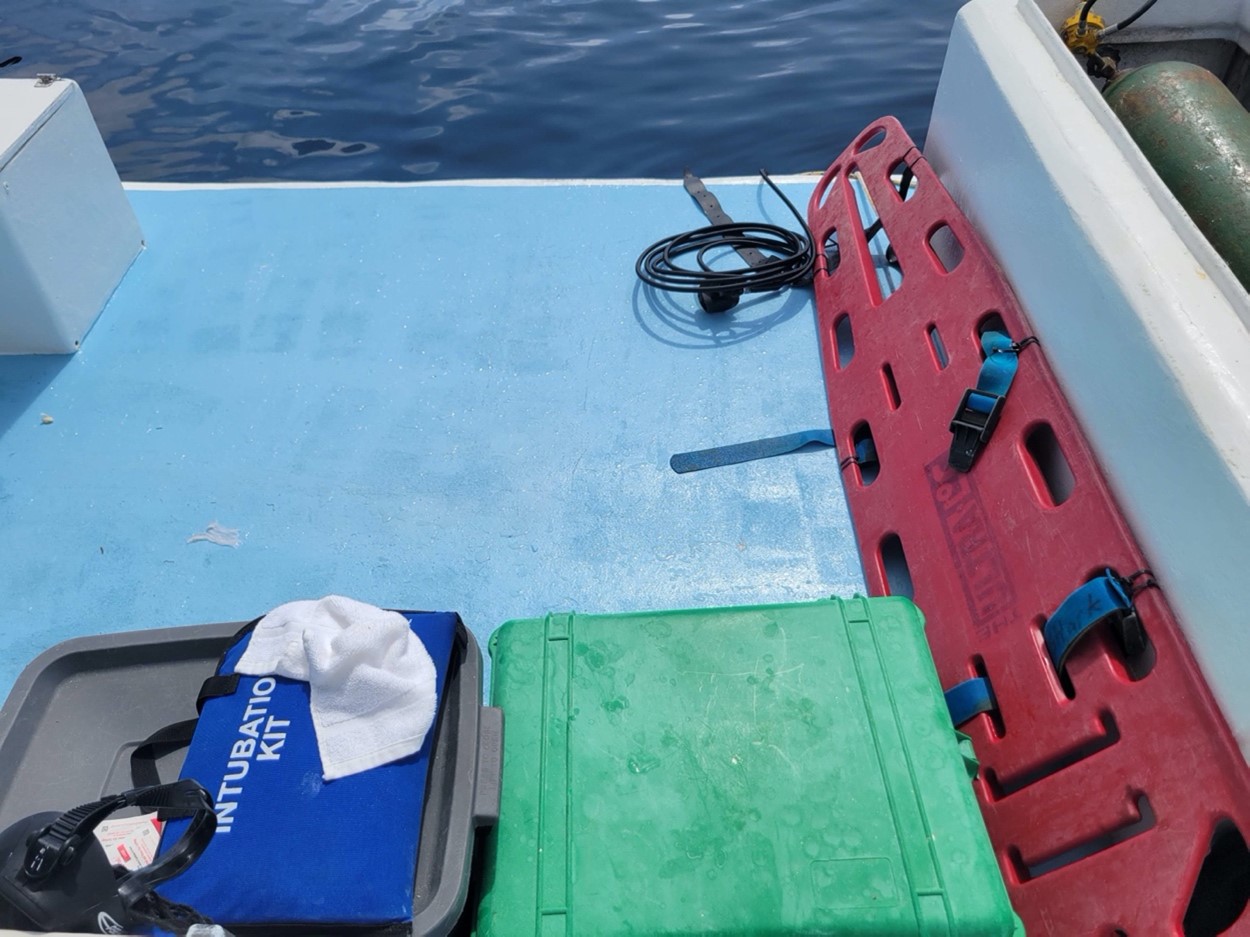
The 6ftx6ft resuscitation area, equipped with a spine board to help lift patients out of the water, a DAN oxygen kit (green box), and airway supplies (grey box). Photo by Elaine Yu.
“TWO MINUTES TO OFFICIAL TOP!” I look at the whiteboard listing the athlete’s name, announced depth, and predicted dive time. In freediving, athletes go up and down the rope by either swimming without fins (called CNF or constant weight without fins), swimming with fins on each foot (CWTB or constant weight bi-fins), swimming with a monofin (constant weight), or pulling on the rope (free immersion). CNF is the most taxing on divers, as they have to swim without the assistance of fins or touching the rope. The precious oxygen in their lungs is used up even more by the effort to swim and can run out before the athlete reaches the surface, resulting in a blackout. Safety divers at this event are trained to recognize signs of blackout while underwater and are tasked with protecting the airway, giving rescue breaths on the surface, and bringing the athletes to the medical platform where I will see-saw them onto the boat using the spine board and bag them until they start breathing on their own again. On constant weight no fins day, we predict to see the most incidents.
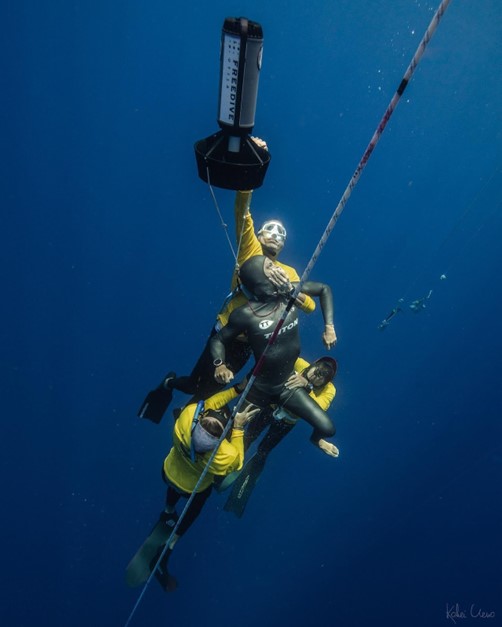
Safety divers swimming a diver to the surface after an underwater blackout. Photo by Kohei Ueno.
“ONE MINUTE TO OFFICIAL TOP!” All eyes are on the diver now, who floats motionless on the surface of the water, held afloat by colorful pool noodles and inflatable neck pillows to combat the weight belt and neck weights that will help them freefall to their announced depth. Beyond 30-40 meters of depth, the human lungs shrink to residual volumes and the pulmonary vessels and heart engorge to fill the noncompressible thorax. Many professional freedivers will “pack” their lungs with extra air beyond a full inhale in order to combat the pressure gradient across the capillary beds at depth. If the transcapillary pressure is too high, fluid starts leaking into the alveoli. Any sudden movement, like a stroke taken too rapidly, can burst the capillaries and cause bleeding into the lung space, resulting in a “squeeze”. A squeeze can initially look benign, with some divers feeling just slight congestion in their chest, while others have frank hemoptysis. In those presenting for medical evaluation, it is not uncommon to find an oxygen saturation of 70-80%, lungs full of crackles, and B-lines throughout. The deeper the dive, the more I worry about a diver squeezing.
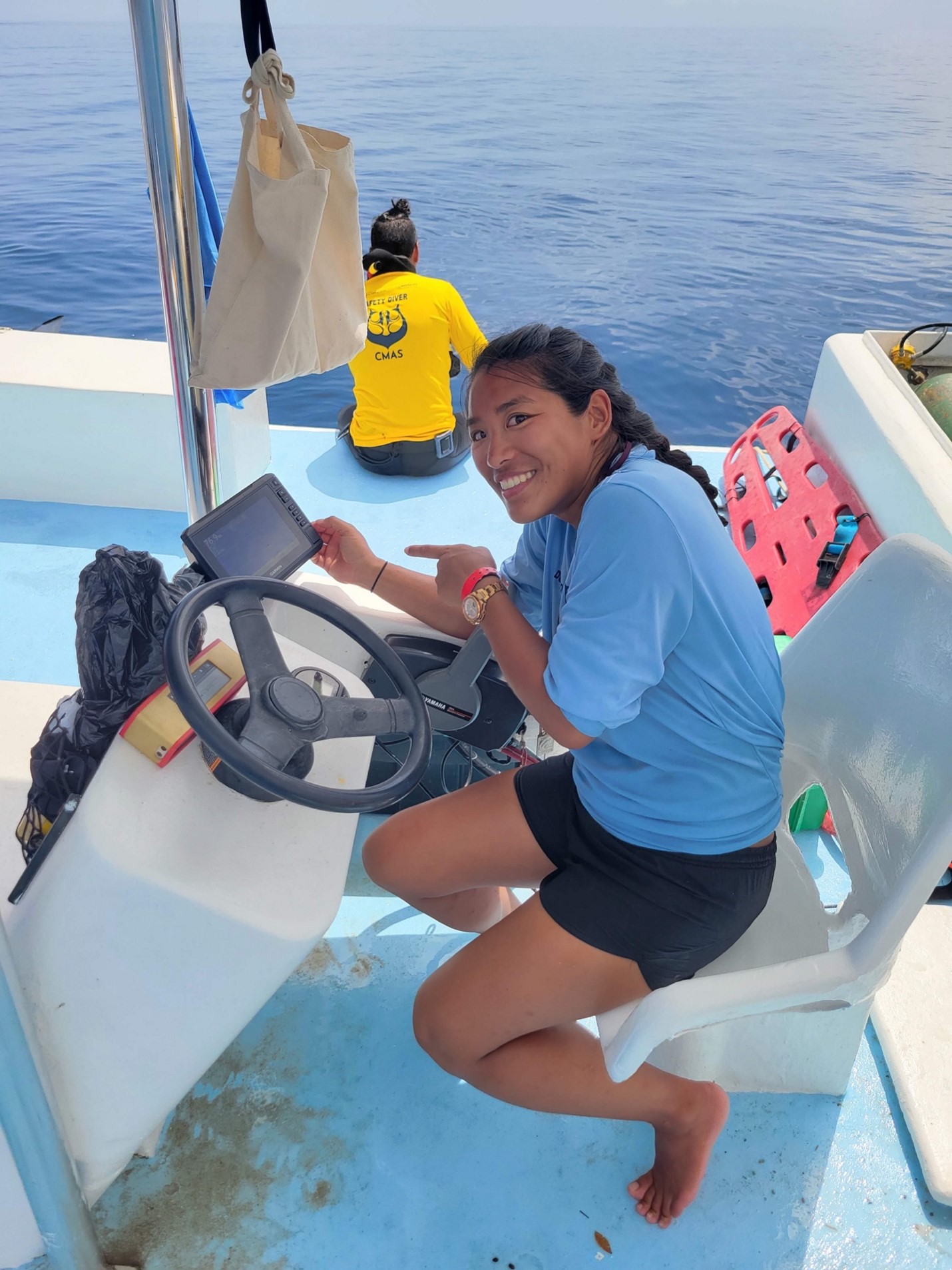
Watching the diver on sonar, ready to attend to any medical issues. Photo by Elaine Yu.
“FIVE, FOUR, THREE, TWO, ONE – OFFICIAL TOP!” Once the official start of the dive is called, the diver has an additional 30 seconds before they must start swimming down. This gives them time to adjust their goggles or mask, secure their nose clip, and perform the first of many equalizations, using the air in their mouth to equalize the sinuses and eustachian tube against the increasing ambient pressure on the way down. If you don’t equalize fast or hard enough, you risk a sinus squeeze or mask squeeze. Starting a dive congested will make it more difficult to equalize. If you equalize too hard, you risk rupturing your tympanic membrane(s), which could cause instant vertigo and disorientation underwater.
“DIVER APPROACHING!” My eyes are glued to the surface of the water, waiting for the diver to shoot up, grab the rope, and maintain their airway above the surface of the water for 20 seconds. A surface blackout can occur in these first few seconds if the diver does not rapidly increase oxygenation to the brain through recovery breathing- a special breathing pattern used to open the alveoli and facilitate oxygen exchange. A surface blackout can be just as dangerous as one underwater, as the safety divers will not touch the diver until a judge deems it necessary. The athlete may be twitching, stuttering, and staring off into the distance from hypoxia, but if they can protect their airway and signal to the judge they are okay, the dive is considered clean.
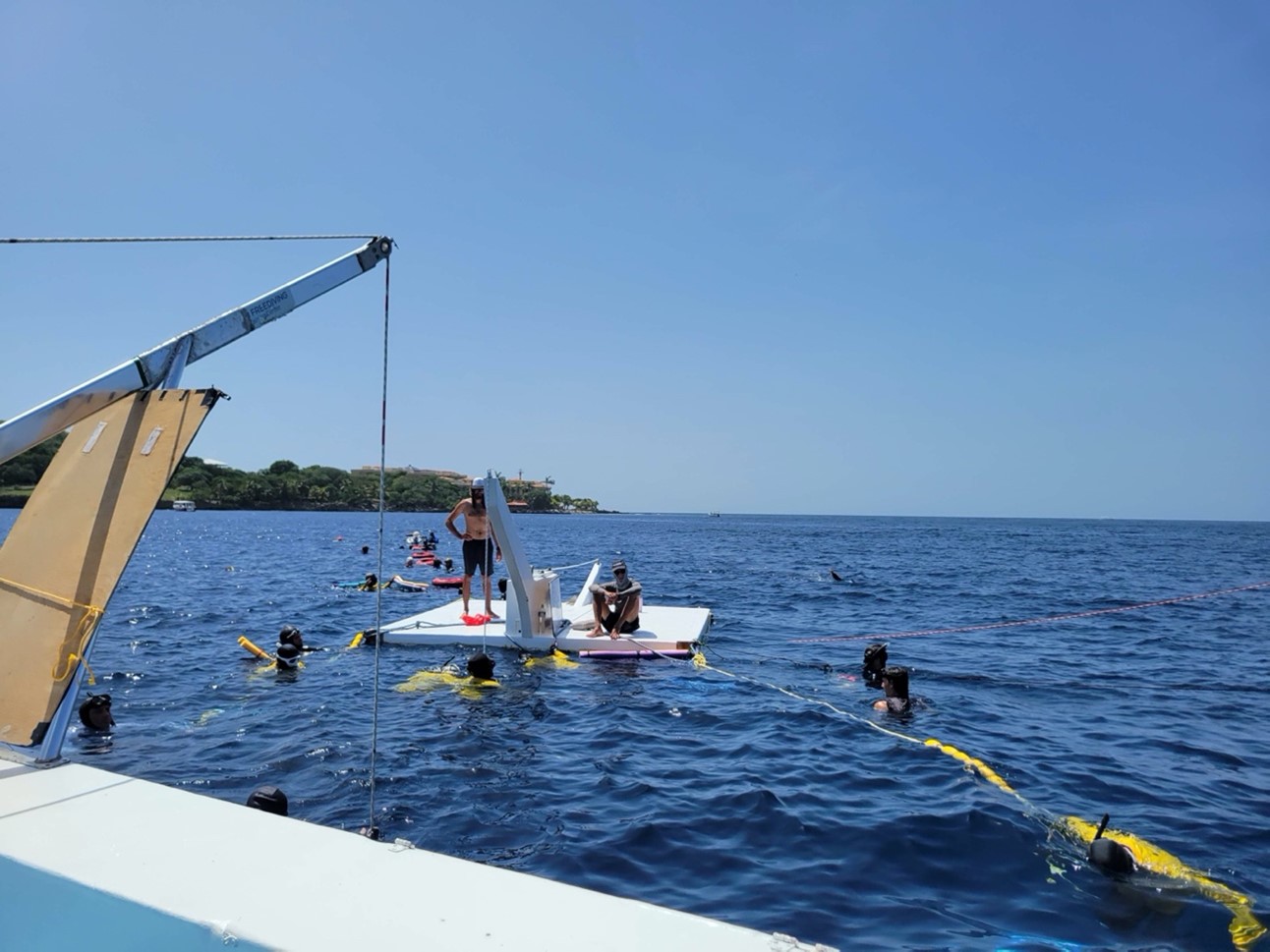
View of two dive lines, with athletes and safety divers (in yellow) in the water. Photo by Elaine Yu.
“WHITE CARD!” The judge’s announcement of a clean dive is followed by shouts of delight and splashes on the surface, the freedivers’ celebration. The revelry is short, the diver is hurried out of the competition area, and the line is adjusted to the next diver’s announced depth. However, the diver is not out of the danger zone just yet. The stroke-like symptoms of an arterial gas embolism typically present within 15 minutes of surfacing and can be devastating. Exhausted divers that are floating in the vicinity to watch their teammates on the line, swimming towards their taxi boat out of the competition area, or, most dangerously, hovering at a depth of 5 meters breathing 100% oxygen to wash out the nitrogen built up during their dive, can all develop the symptoms of a gas embolism when no one is watching. Any neurological complaint should be investigated thoroughly and divers with deficits should be immediately evacuated for recompression.
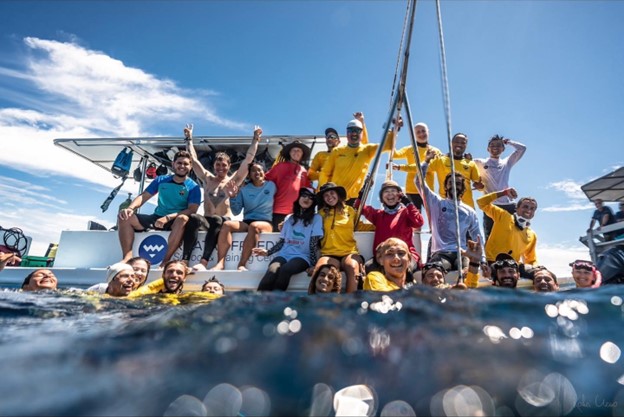
Safety team (in yellow/white), judges (in red), and doctors (in blue). Photo by Kohei Ueno.
At this year’s competition, no one required evacuation. Several blackouts and squeezes were treated successfully with surface oxygen and a couple of divers had to pull out of the competition due to ruptured tympanic membranes. I developed a deep appreciation of the hard work it takes to be a safety diver, repeatedly going to depths of 40-50m with little rest in between and dedicating your full attention to each athlete for hours on end. The athletes pushed their limits and set records because they knew they could trust their lives to the safety crew, who were always there to seal off the airway underwater, give the first breath on the surface, and swim each tired, dyspneic, or unconscious diver to the medical platform, before doing it all over again for the next diver.
“THREE MINUTES TO OFFICIAL TOP!”